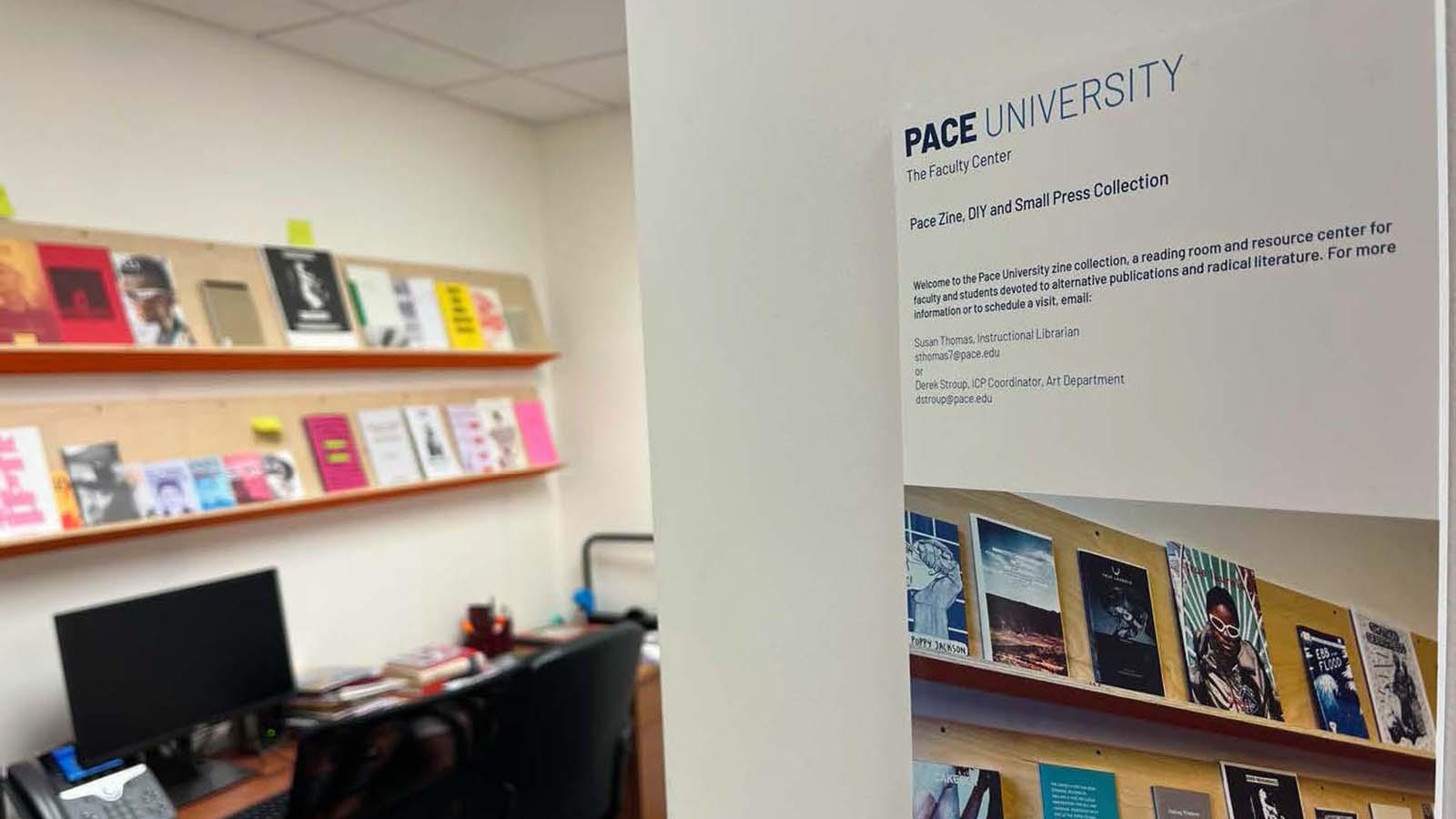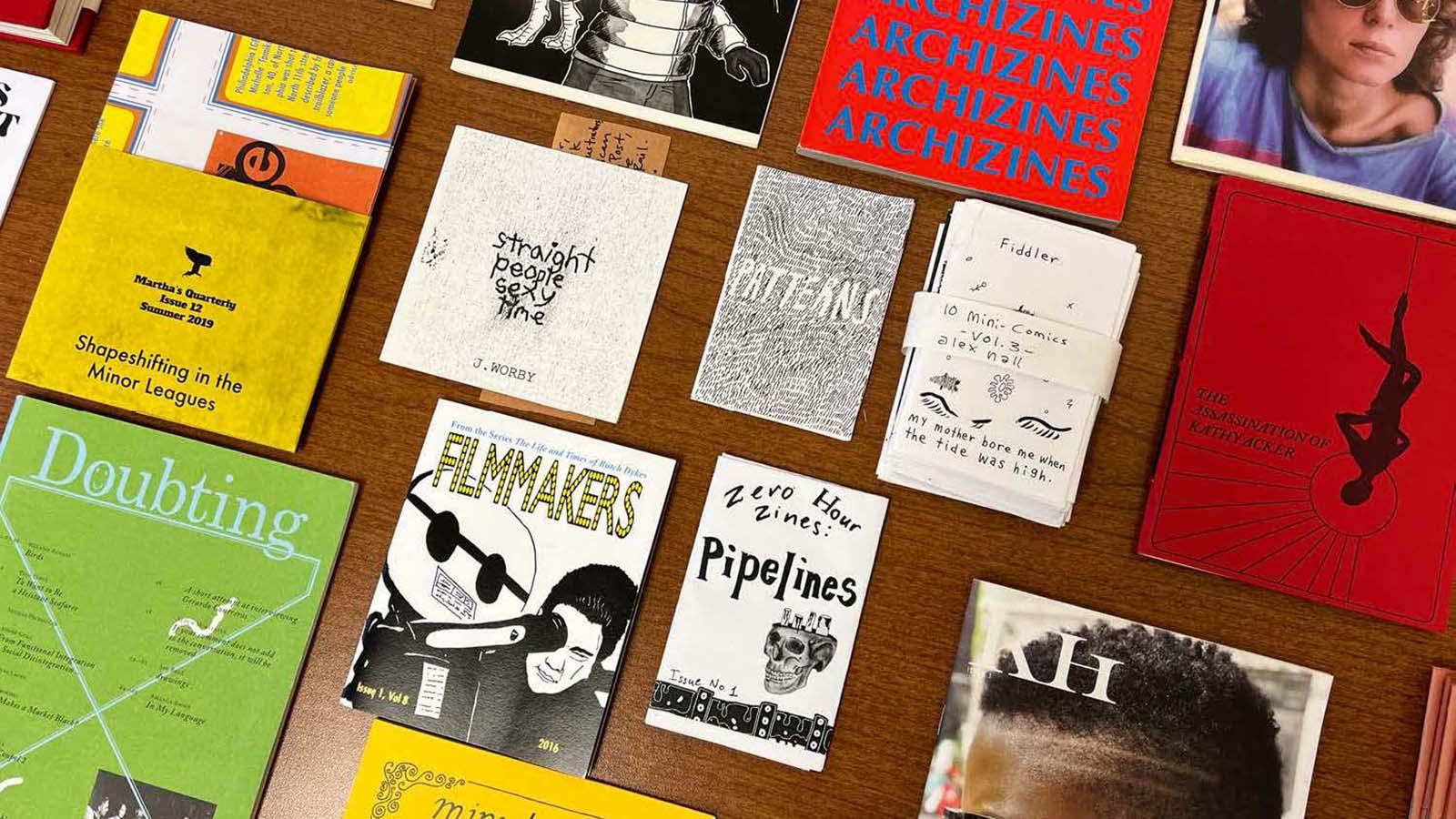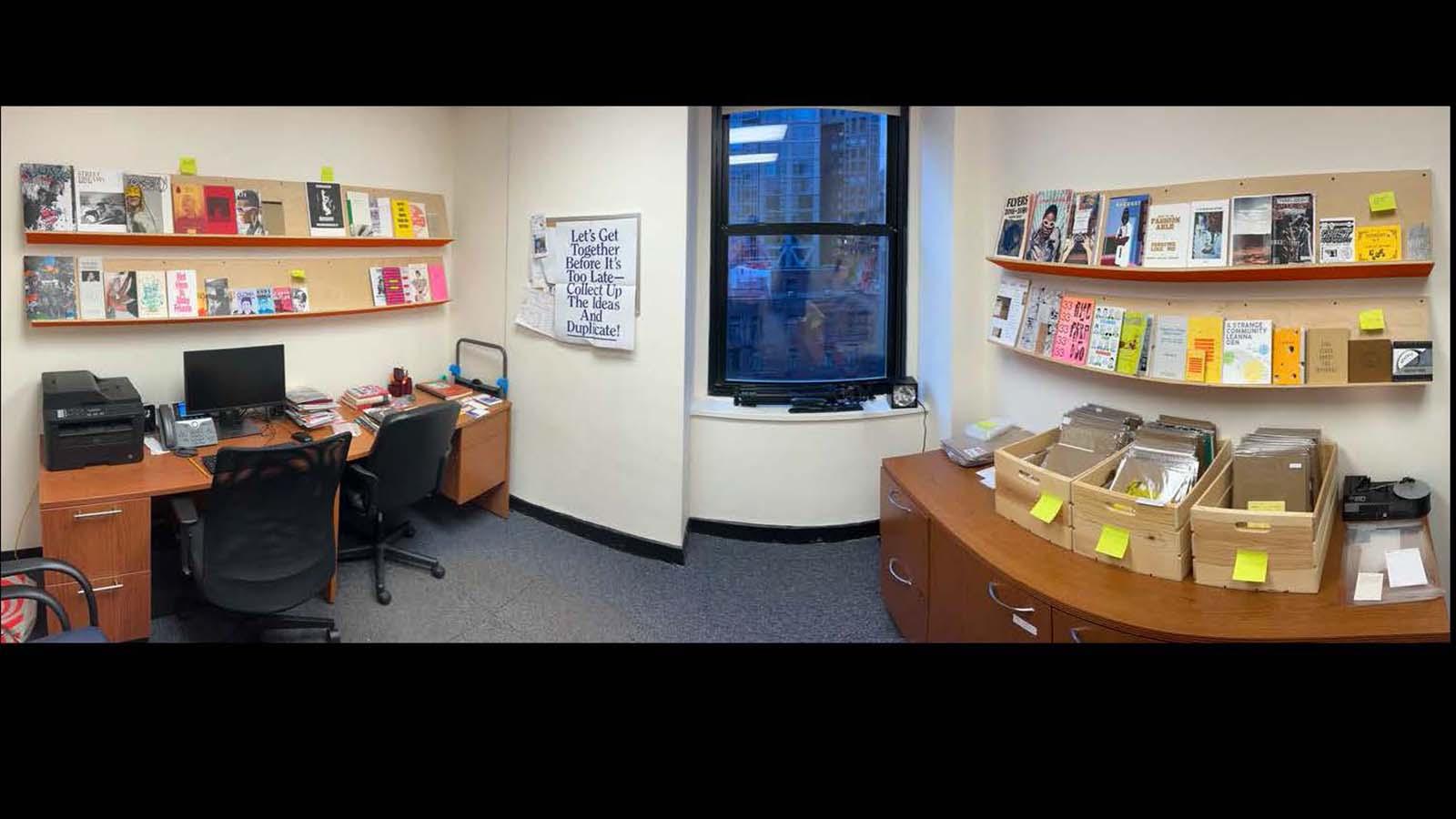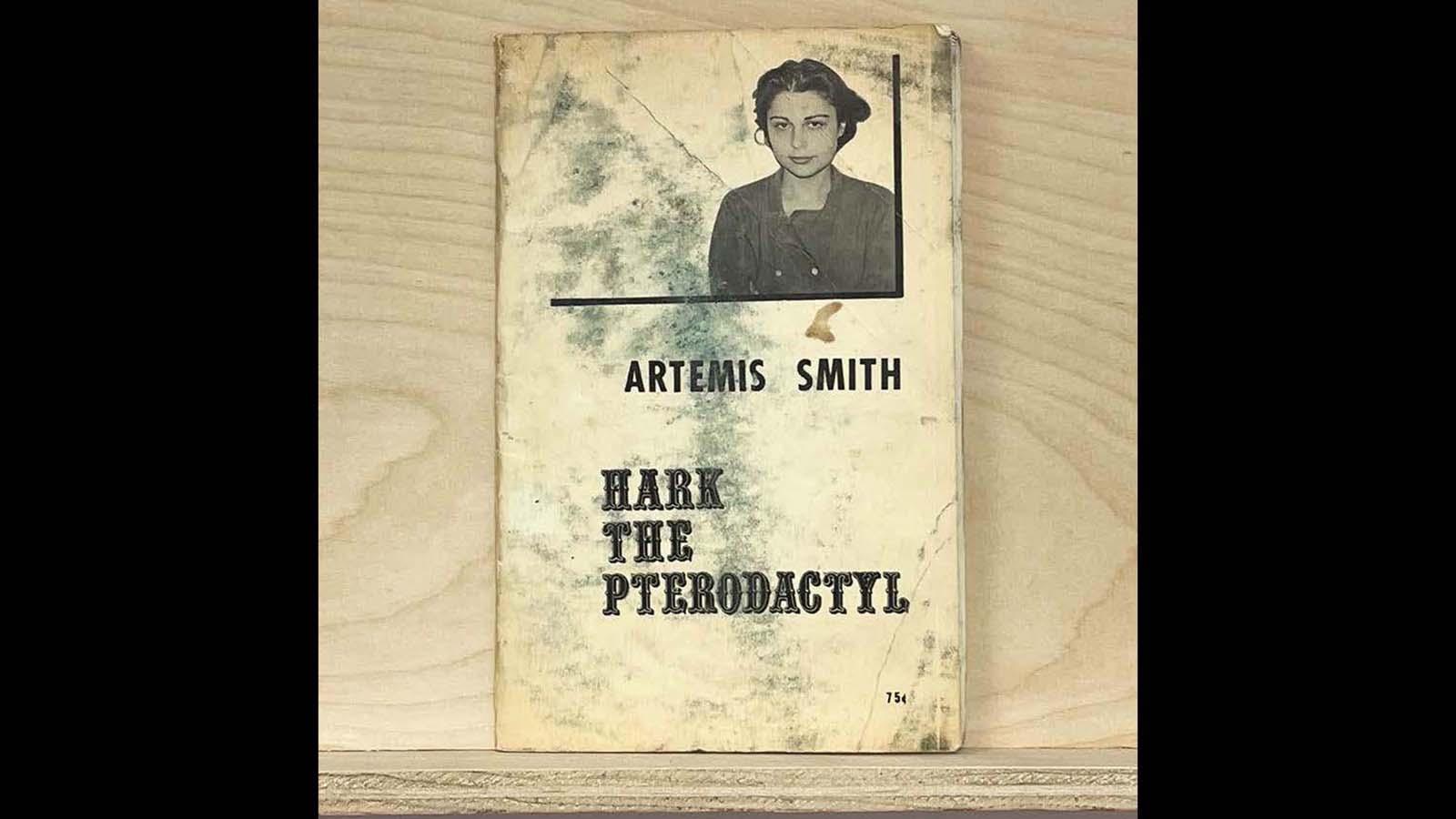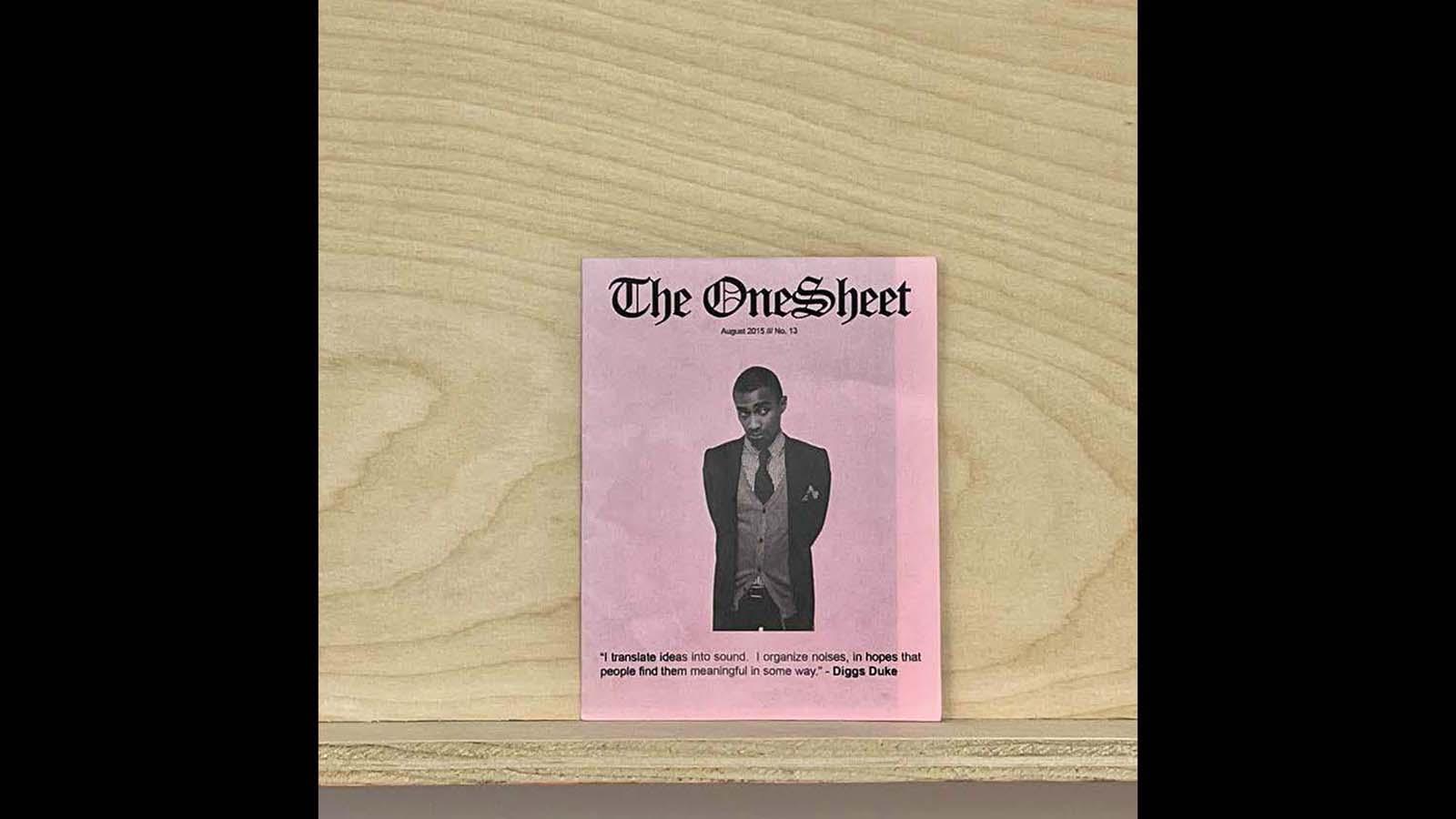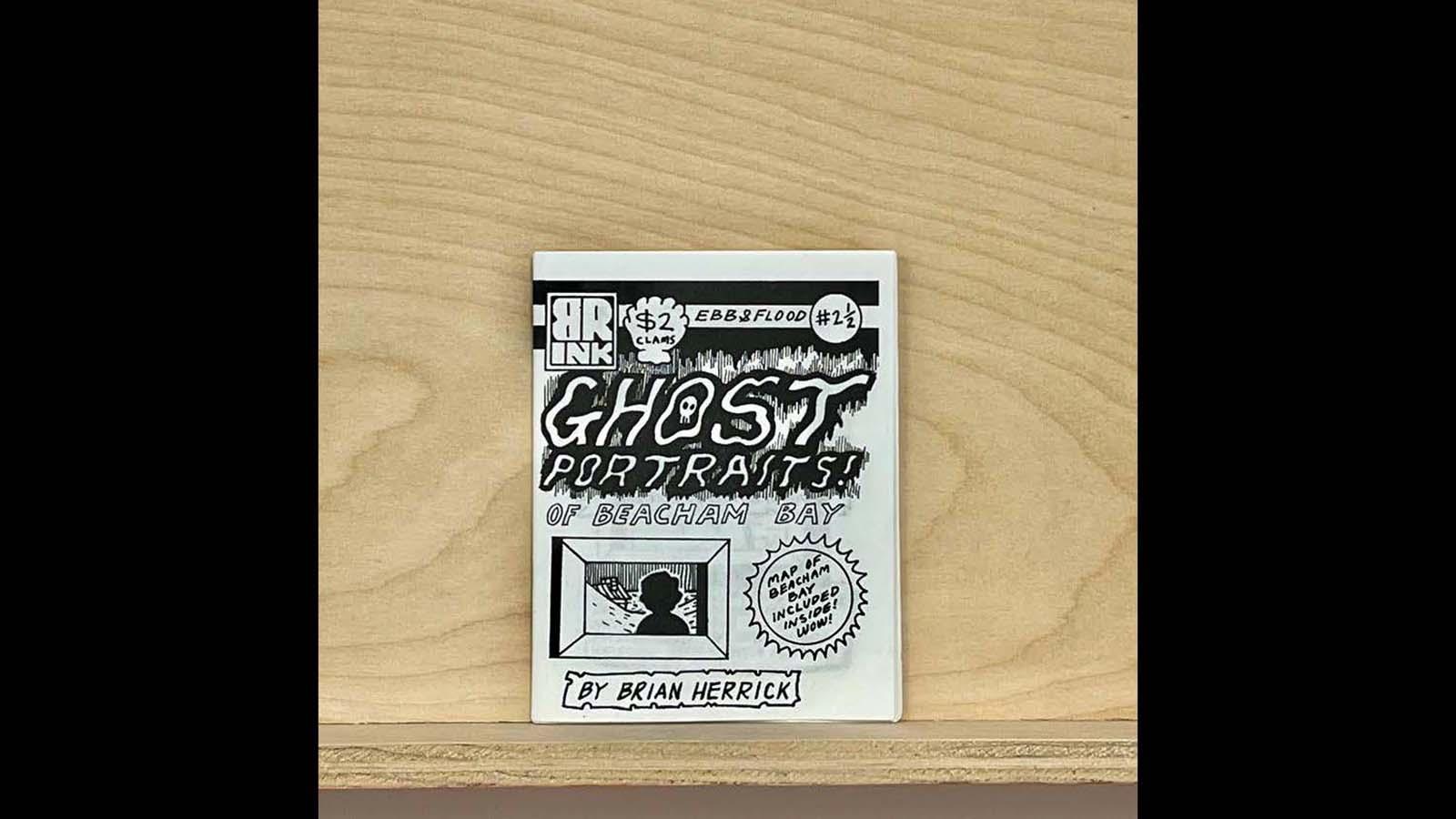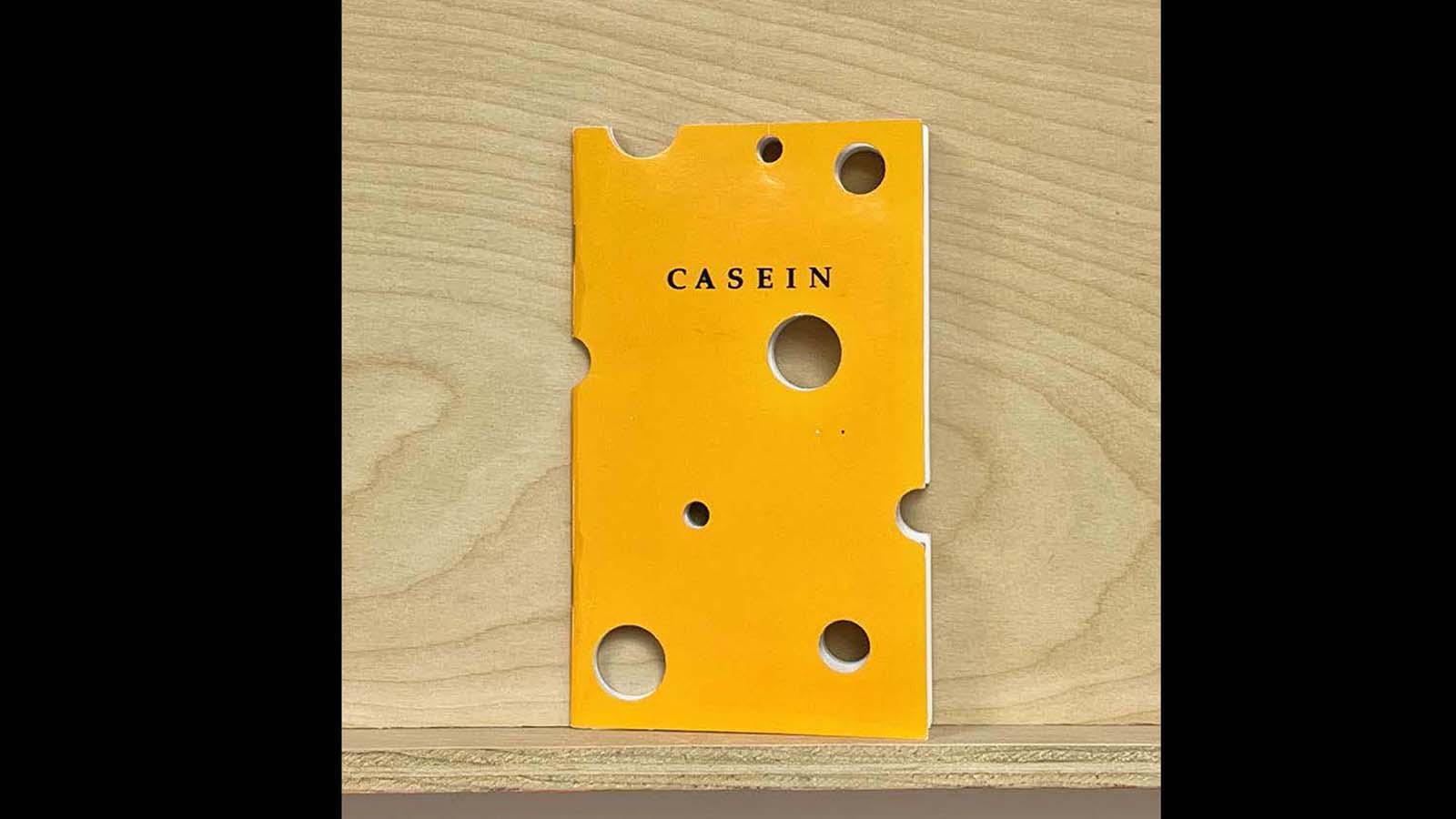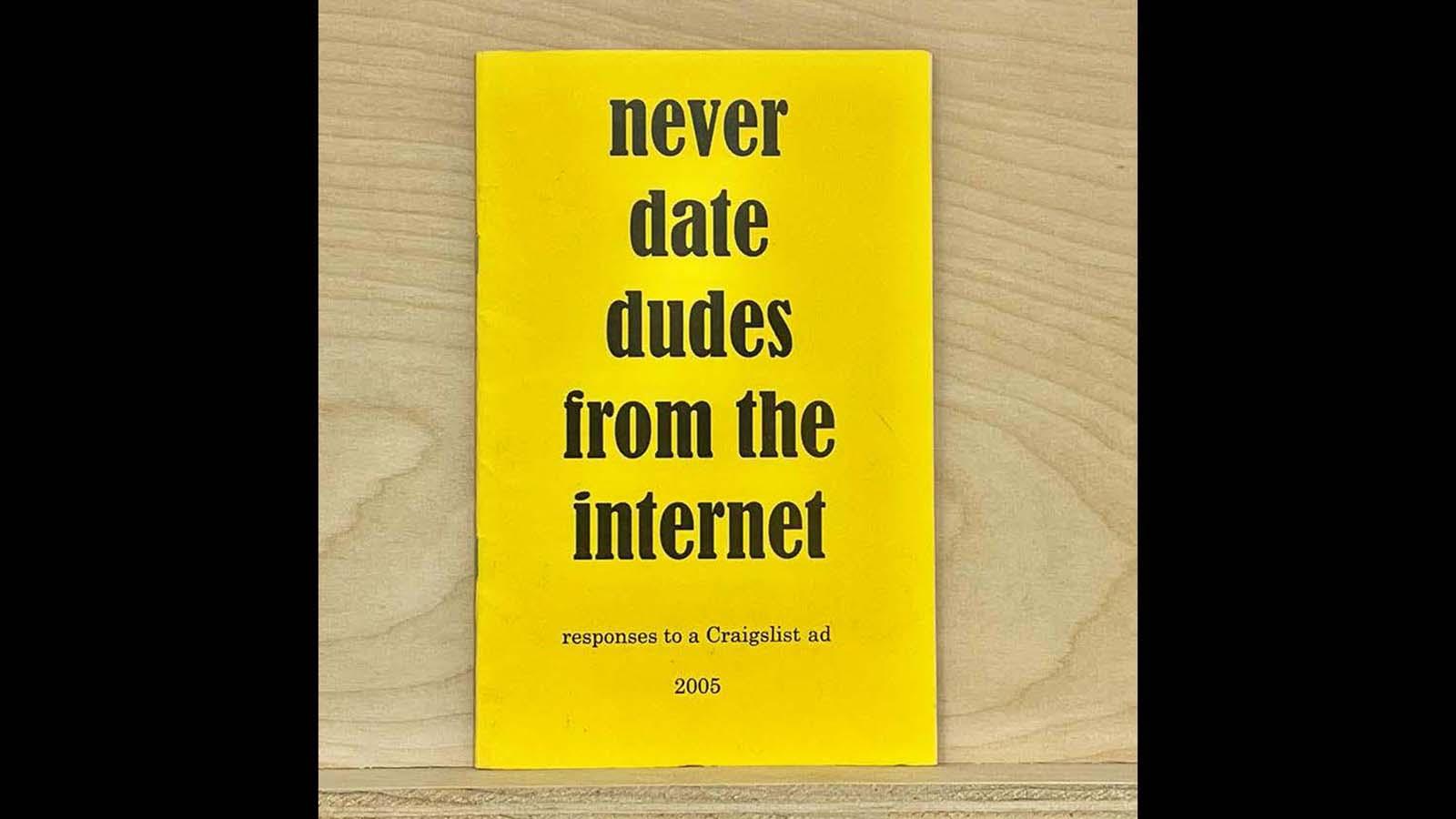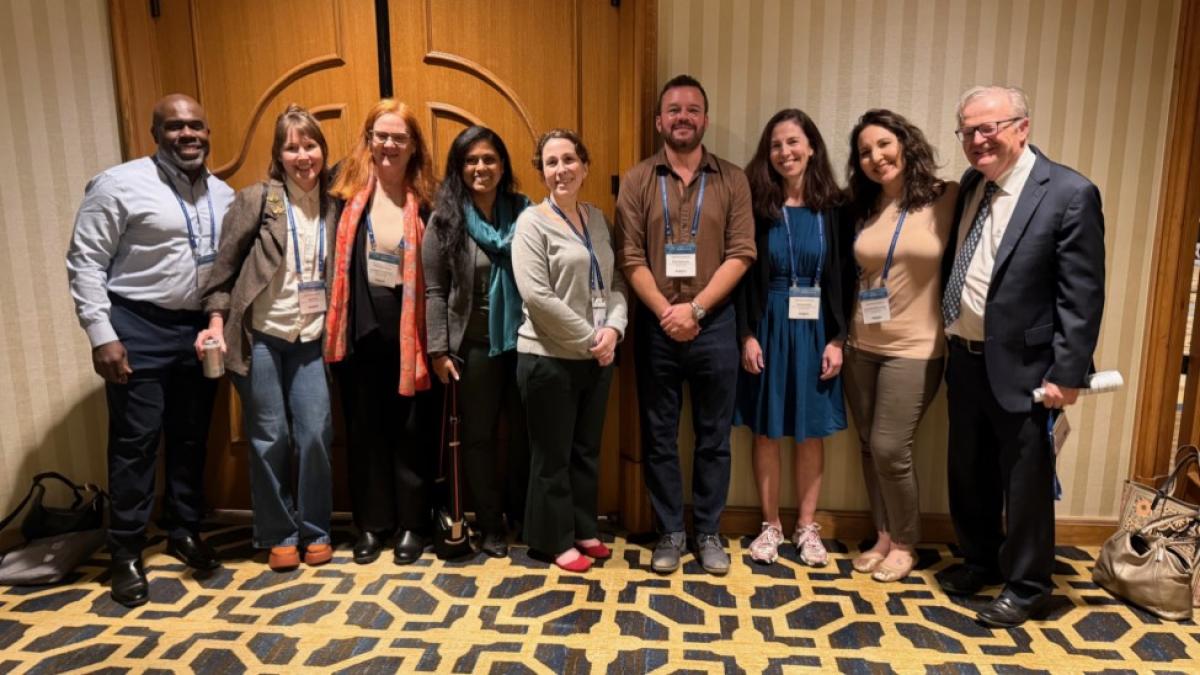Faculty and leadership from the Elisabeth Haub School of Law at Pace University participated in the American Association of Law Schools (AALS) Annual Meeting, held January 6–9, 2026, in New Orleans, Louisiana.
Teaching Outside the Box with Outsider Publications

One of New York City’s smallest libraries can be found right here at Pace.
Clocking in at 97.92 square feet, Pace’s Zine library at 161 William Street is a reminder of how even the smallest things can have a big impact.
Instructional Services Librarian at Birnbaum Library Susan Thomas and Associate Professor Kelley Kreitz co-founded the library, and they both recently spoke passionately of the power of zines at a workshop sponsored by the Faculty Center. The workshop, Teaching and Learning with Zines Across the Disciplines, opened with a presentation by co-director Professor Derek Stroup in which he explained the unique elements at play when working with zines, accompanied by photos of some of the libraries’ eclectic offerings.
Stroup’s introduction reveals an eclectic variety of pieces. At Pace’s Zine library, you can find acclaimed historical zines from the 1970s next to zines created by students. Full-color magazines with huge budgets sit on the shelf next to flimsy, photocopied zines originally given out for free on the subway. This kind of variety presented on equal ground can spark conversations about where good art comes from, and who creates it. With a lower barrier to entry than traditional publishing, authors with smaller (or virtually no) budgets can share their perspective and create their own unique work using zines.
We are on the outside, we are in the underneath of publication.
—Derek Stroup
“We are on the outside, we are in the underneath of publication,” Stroup said. Many of these zines are unique and cannot be found for elsewhere—not even on Amazon.
But Pace’s Zine Library isn’t just an interesting curiosity. This particular workshop was sponsored by the Faculty Center, so much of the time was dedicated to exploring how faculty can best utilize the library. Many faculty, including Professor Steve Bookman, have brought their classes to the library, included zines in course materials, and even assigned zines as projects. According to him, students are big fans. “The multi-media aspect the students love because they don’t see it as an essay. It is an essay, but it’s more fun and creative for them,” said Bookman. “They have to be able to put something into fewer words which is something they are going to take into the real world.”
"We work together to provide this exciting, unique resource for the students."
—Susan Thomas
“Students play an important role, too,” says Thomas. “They select zines and related publications for the collection; donate their own zines; intern on a collaboration between the Zine Library and the Pace University Art Gallery and the Chinatown Art Brigade exhibition; and volunteer in the Zine Library as student catalogers.” Their contributions are made possible by the collaboration between Pace librarians and faculty, who work together to explore how zines and zine pedagogy can be utilized in the classroom. According to Thomas, "We work together to provide this exciting, unique resource for the students."
With a wide variety of topics—from sexuality and gender to racial justice; visual arts to history; skateboarding, nutrition, punk music, and more—zines can be utilized as primary texts across many disciplines to explore course content. Faculty trying to reinvent how their own material is taught and learned can utilize pedagogy resources that explain how to create their own zines or find zine lesson plans. And for faculty who don’t feel the course materials are represented in the library, the library wants to hear from you. Early collaborator to the library and zine-enthusiast Associate Professor Kelley Kreitz, PhD, recommended during the workshop, “We can use faculty needs to direct where the collection goes to some degree.”
It puts the idea of publishing and authorship within reach.
—Derek Stroup
For students who have big ideas but limited resources, zines create opportunity. “A student can’t create a book on economic change in Manhattan in a semester. But here’s something within reach, they can probably create an eight-page zine,” Stroup explained. “It puts the idea of publishing and authorship within reach.” Whether a zine is created for a school project or for extracurricular interests and passions, zines can empower students to become published authors and get real-world experience expressing their ideas and research.
Whether you want to use the zines as primary texts, task students with creating their zines for research projects, or use resources to create zines of your own, Pace’s Zine Library is ready to support Pace Community members in the ever-forward push for innovating the way students learn.
Access and browse the Zine Library Collection online. To plan a visit or learn more, visit Pace’s Zine Library website.
